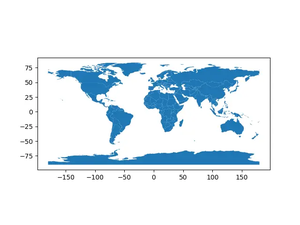Table of Contents
- Overview
- Understanding “naive” and “localized”
- Example 1: Basic Localization
- Example 2: Handling Ambiguous Times
- Example 3: Localizing to UTC and Converting
- Example 4: Avoiding Non-existent Times during DST Transition
- Example 5: Applying Localization to a Dataframe
- Example 6: Working with Timezone-aware Data
- Conclusion
Overview
Working with time series data is a critical task in many analytical, forecasting, and reporting applications. In Python, the pandas library is a powerful tool for time series manipulation, offering extensive functionality for time-based data. One such feature is tz_localize(), a method for localizing naive time series objects to a specific timezone. This tutorial will walk you through how to use the pandas.Series.tz_localize() method with six practical examples, ranging from basic to advanced usage.
Understanding “naive” and “localized”
Before diving into the examples, it’s important to understand what “naive” and “localized” time series objects mean. A “naive” time series object is one that does not contain information about its timezone. Localizing means associating a naive time series object with a specific timezone, converting it into an “aware” time series object that knows its timezone.
Example 1: Basic Localization
import pandas as pd
# Create a naive datetime series
series = pd.Series(pd.date_range('2023-01-01', periods=3, freq='D'))
print("Before localization:\n", series)
# Localize to Eastern Standard Time (EST)
localized_series = series.dt.tz_localize('America/New_York')
print("After localization:\n", localized_series)This example demonstrates the basic usage of tz_localize(), converting a naive series into one that is aware of the ‘America/New_York’ timezone. Notice how the output changes to include timezone information.
Example 2: Handling Ambiguous Times
import pandas as pd
# Create a datetime series that includes the end of daylight saving time
ambiguous_series = pd.Series(pd.date_range('2023-11-05', periods=4, freq='H'))
# Attempt to localize to EST, handling ambiguous times by choosing Standard Time
localized_ambiguous_series = ambiguous_series.dt.tz_localize('America/New_York', ambiguous='infer')
print(localized_ambiguous_series)Daylight saving time introduces ambiguity in time series data. The ambiguous='infer' option instructs pandas to make an intelligent guess about the transition. This example highlights how pandas handles this complexity.
Example 3: Localizing to UTC and Converting
import pandas as pd
# Localize a naive series to UTC
utc_series = pd.Series(pd.date_range('2023-03-01', periods=3, freq='D')).dt.tz_localize('UTC')
# Convert the localized series to another timezone
converted_series = utc_series.dt.tz_convert('Asia/Tokyo')
print(converted_series)It’s often useful to first localize time series data to UTC before converting to another timezone. This ensures consistent handling of time around the world and is especially important in global applications.
Example 4: Avoiding Non-existent Times during DST Transition
import pandas as pd
# Create a series that includes the start of daylight saving time
nonexistent_series = pd.Series(pd.date_range('2023-03-12', periods=3, freq='H'))
# Attempt to localize, handling non-existent times
safe_series = nonexistent_series.dt.tz_localize('America/New_York', nonexistent='shift_forward')
print(safe_series)When localizing across a Daylight Saving Time start boundary, certain times do not exist. The nonexistent='shift_forward' option shifts these times forward to the next valid datetime, avoiding errors.
Example 5: Applying Localization to a Dataframe
import pandas as pd
# Creating a dataframe with datetime column
df = pd.DataFrame({'datetime': pd.date_range('2023-05-01', periods=3, freq='D')})
# Localize the 'datetime' column
df['datetime'] = df['datetime'].dt.tz_localize('America/Los_Angeles')
print(df)This example extends the concept of localization to Pandas DataFrames, demonstrating how to localize a specific datetime column to a desired timezone.
Example 6: Working with Timezone-aware Data
import pandas as pd
# Starting with a timezone-aware series
aware_series = pd.Series(pd.date_range('2023-07-01T12:00:00', periods=3, freq='D', tz='UTC'))
# Changing the timezone without conversion
new_aware_series = aware_series.dt.tz_localize(None).dt.tz_localize('Asia/Kolkata')
print(new_aware_series)In situations where you’re working with timezone-aware data but need to change the timezone, you can first remove the timezone information using tz_localize(None) and then re-localize to the desired timezone. This effectively allows for a “timezone reset”.
Conclusion
The pandas.Series.tz_localize() method provides powerful options for managing time zone information in your data, enabling greater flexibility and accuracy in time series analysis. Through these examples, we’ve explored a range of use cases from basic localization to handling complex scenarios like daylight saving time transitions and timezone conversions. With an understanding of these techniques, you can better manage and analyze time series data across different time zones.
